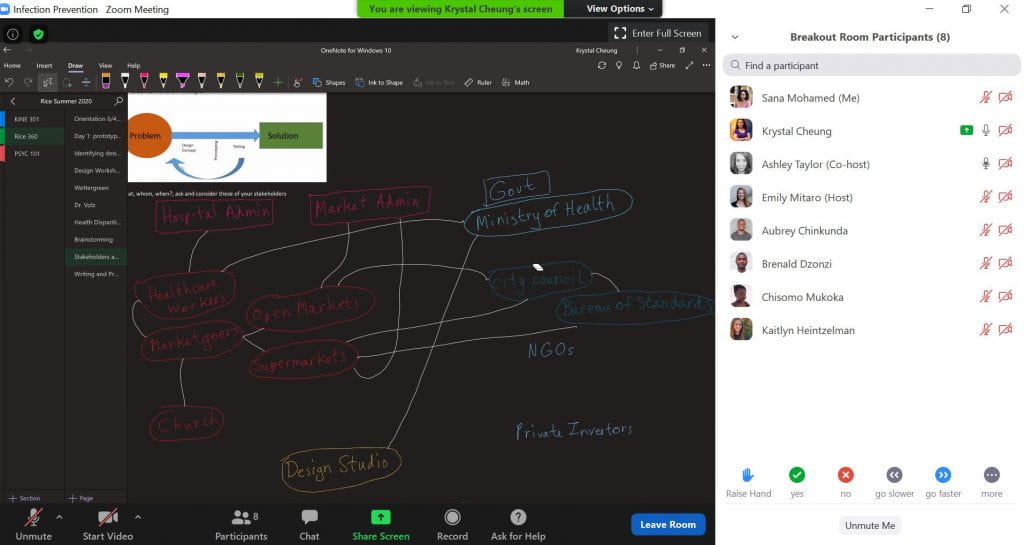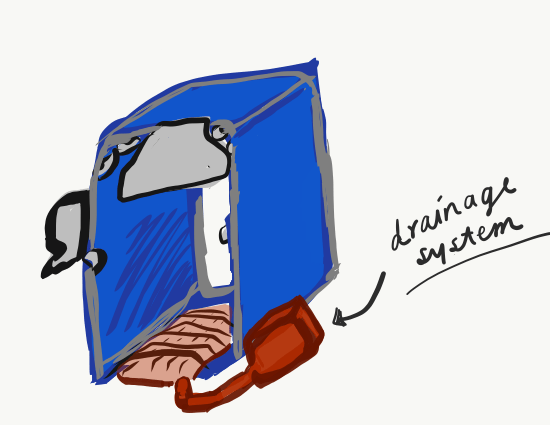Hello!
This week, we have been diving into the concept of localized needs findings and innovation opportunities in preparation for our stakeholder interviews next week. It’s hard to believe that we are already halfway through the internship. It is so exciting to reflect on some of the personal and professional growth I have had thus far—while I have already learned an incredible amount, I still have so much to explore.
Monday started off with a workshop from our lovely TA’s Aubrey & Hannah on presentations and technical communication. This workshop really emphasized that regardless of how amazing a design or innovation may be, there are still many skills such as communication that are essential to the success of a device. We also had some time in the second half of the workshop to meet as a team and catch up on some of the deliverables we started last week. We continued stakeholder mapping by connecting that various ways in which there are not only differing levels of stakeholder in our devices, but their interconnectedness with each other and the various nuances that exist in each level.

Tuesday was National Election Day in Malawi, so we did not meet as a group. It’s great to hear that my teammates exercised their civic duty. I wish we had a national election holiday here in the U.S!
On Wednesday, we had a guest speaker, Dr. Wayne Decker from the Flame Tree Initiative, an organization that focuses on fostering entrepreneurship among local communities in Malawi to tackle social problems. Dr. Decker was an engaging and witty presenter who imparted a lot of wisdom to us. I found the focus on energy poverty and rural contexts to be extremely informative. Especially as an American, this is an area that I may fail to sufficiently pay critical attention to. Afterwards, we brainstormed some ways that our own devices could incorporate the productive use of energy for mutual success in Malawi. We are now further looking into the existing supply chains, the use of sustainable, locally sourced manufacturing material, solar energy, potentially scaling into rural areas, and creating economic opportunities for local communities. This further reinforces that so much of global health design goes beyond the devices that we iterate. It is truly about forging sustainable relationships with local communities for mutual benefit. Dr. Decker also left us with some life advice that has been continuously on my mind over the past week. As a rising senior, I have a lot of anxiety about post-graduate plans, especially because there are so many potential options and paths to take. Dr. Decker imparted on us that in the future, we should “find a big problem that keeps you up at night” and work to tackle it through listening, forging multi-disciplinary partnerships, and incorporating feedback.

On Thursday, we had a workshop led by Dr. Megan Bond on identifying opportunities for innovation. Professor Million also provided an informative presentation on some of the concrete, tangible steps we can take to engage in effective project scoping. This was a great build-up of some of the concepts I learned in GLHT 360 with Dr. Bond last year, supplemented with interesting case studies I encourage you to read. While needs-finding has been critical component of internships in the past, given the virtual nature of our internship and our limited observation capacity, we will have to rely on the strength of our stakeholder interviews to really dive into needs finding. While this presents a challenge, I think this also provides an interesting opportunity to try and creatively engage. It also highlights how critical the skills of communication and listening are.
On Friday, we met Dumisani Kaliati, a Malawian innovator who created MicroMek, a company that uses low-cost drones to deliver medical diagnostics to young children and pregnant women. I previously worked on cervical models in LUCIA and I am interested in women and maternal health, so it was great to hear Dumisani presenting on the work that he is doing in digital health innovation, as well as some of the recent COVID-19 relief efforts. I found his advice on some of the common challenges we might run into, such as a lack of trust from early adopters and a heavy dependency on imported raw materials, particularly relevant, as Dumisani is a young entrepreneur who has successfully dealt with many of these challenges. As we move forward, we will have to critically address these challenges by aligning ourselves in partnerships to enhance our credibility, identifying the sustainable development goal our project aligns to, incorporating feedback on our minimal viable product, finding local alternatives to imported materials, and researching policies that may affect our device.
We ended off this week with a scavenger hunt our lovely TA’s created based on some riddles of common household objects. Everyone was “zoom”-ing by frantically scrambling to take pictures of eggs, toothbrushes, showers, pencils and just about anything found in a home. I got some pretty strange looks from my family as the competition really heated up (even though there was no prize), but in the end team PPE had a very well-deserved victory.
This week, we explored how to adapt our devices to become more sustainable and learned strategies to engage in localized needs findings. It was great to learn about how we can further ground our technologies in the local communities and ecosystems they will inhabit. I am excited to apply these concepts to our stakeholder interviews next week and further iterate on our device and needs recommendations.
Signing off,
Sana